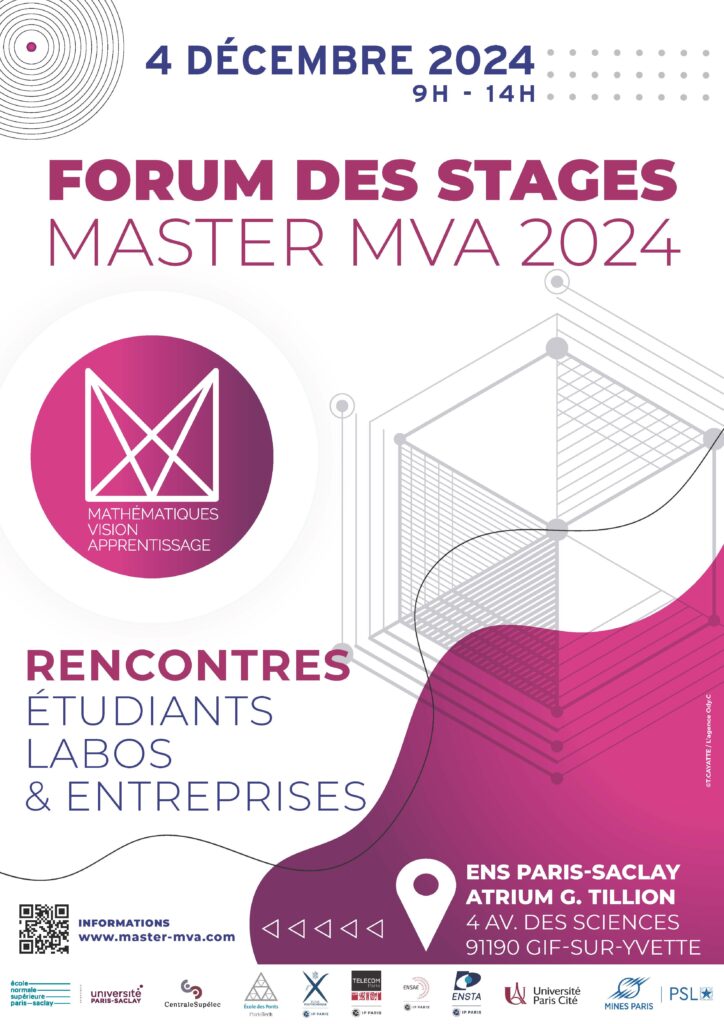Prè-requis
Admission to MVA. Programming skills in Python and/or C++ are recommended.
Objectif du cours
Topological Data Analysis [1, 2, 3, 4, 5, 6] is a sound family of techniques that is gaining an increasing importance for the interactive analysis and visualization of data in imaging and machine learning applications. Given the increasing complexity and size of current collections of acquired or simulated data-sets (2D, 3D and nD), these approaches aim at helping users understand the complexity of their data by providing insights about its topological and geometric structure.
In low dimensions (typically 2 or 3), Topological Data Analysis enables users to rapidly extract, interact with, measure and classify geometrical features defined by level sets or integral lines. Thanks to simplification mechanisms based on Persistent Homology, such algorithms additionally construct multi-scale topological representations of the data, that enable users to perform robust analyses and comparisons despite the presence of noise. The soundness, efficiency and robustness of this class of approaches made it increasingly popular in the last few years in a variety of 2D and 3D imaging analysis applications. In higher dimensions, these techniques have recently been adapted to form the basis of new clustering algorithms.
The purpose of this course is to introduce the main concepts of the recent field of Topological Data Analysis and illustrate their use in imaging (scientific visualization) and machine learning applications, both from a mathematical and practical point of view [7, 8].
Organisation des séances
– 6 lectures of 2 hours
– 6 practical sessions of 2 hours
– 1 final research seminar (3 hours)
Numerus clausus : 40 students
Mode de validation
Short lesson exam and research seminar.
Références
[1] H. Edelsbrunner, J. Harer, « Computational Topology: An Introduction », American Mathematical Society, 2010.
[2] J. Milnor. « Morse Theory », Princeton University Press, 1963.
[3] A. Fomenko and T. Kunii, « Topological modeling for visualization », Springer 1997.
[4] V. Pascucci, X. Tricoche, H. Hagen, J. Tierny, « Topological methods in data analysis and visualization », Springer, 2010.
[5] S. Oudot, « Persistence Theory: From Quiver Representations to Data Analysis ». AMS Mathematical Surveys and Monographs, volume 209, 2015.
[6] F. Chazal, High-Dimensional Topological Data Analysis. To appear in the 3rd edition of the Handbook of Discrete and Computational Geometry.
[7] Gudhi – Geometry Understanding in Higher Dimensions
[8] TTK – The Topology ToolKit
Thèmes abordés
– Simplicial complexes
– Simplicial homology
– Persistent homology
– Smooth and Discrete Morse Theories
– Persistence Diagrams
– Reeb graphs and mappers
– Morse-Smale complexes
– Topological inference in high dimensions
– Topological signatures and topological features for classification and learning
– Implementations in Python and C++
Frédéric Chazal
(INRIA)
Julien Tierny
(CNRS)
